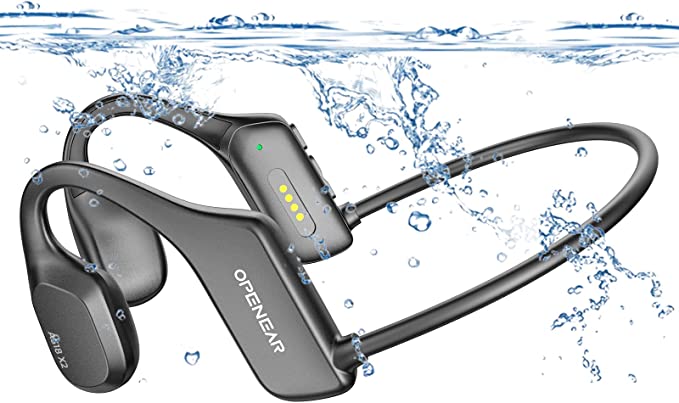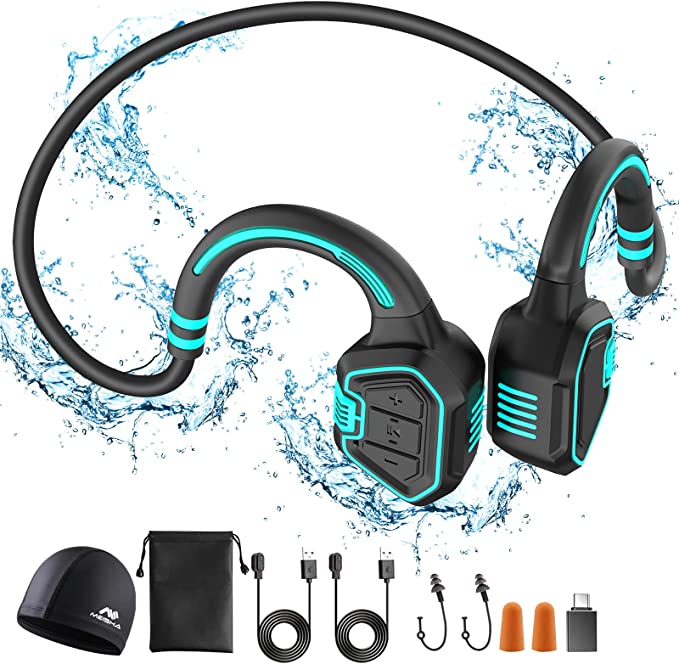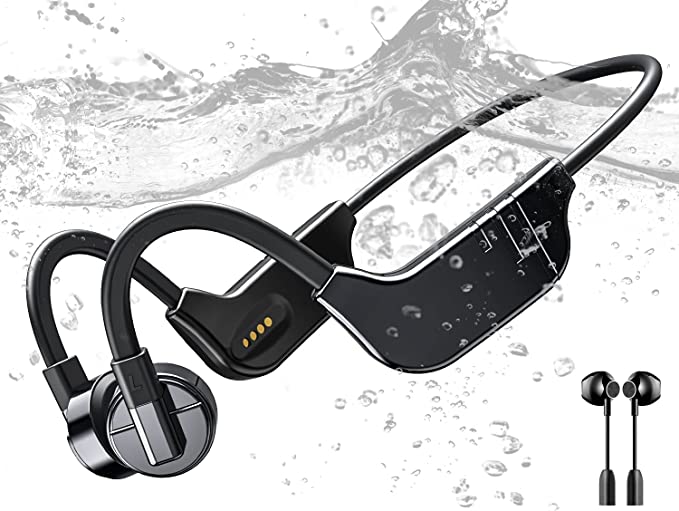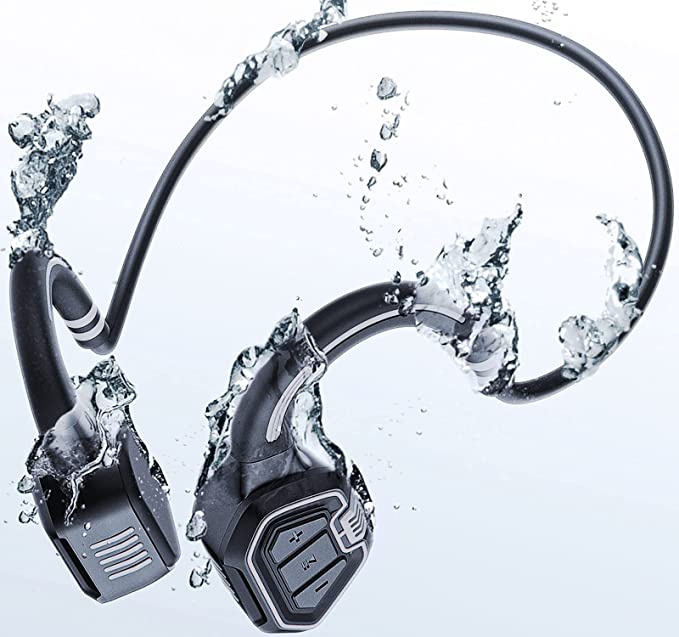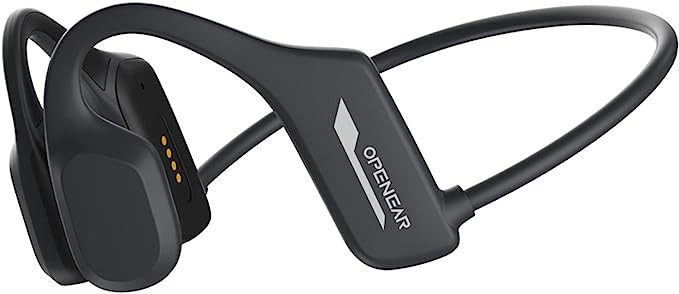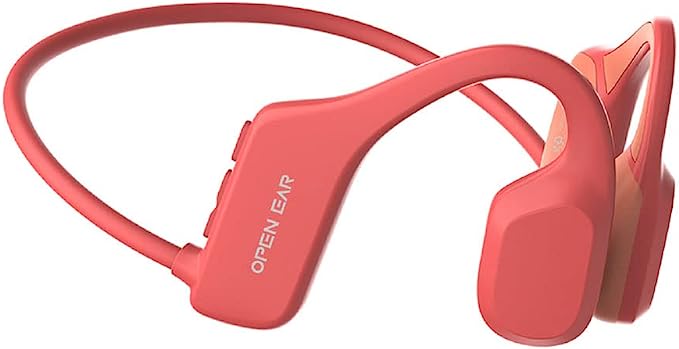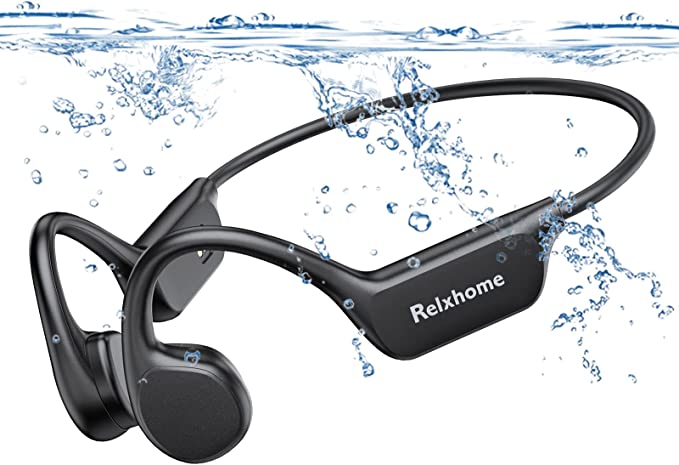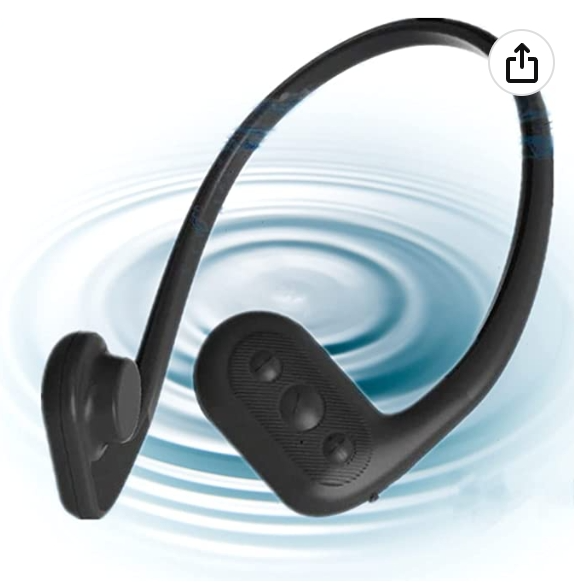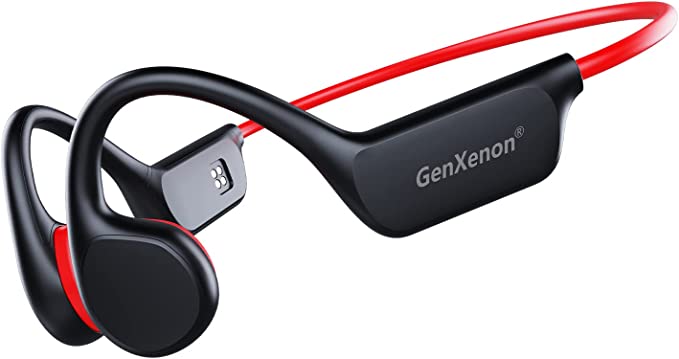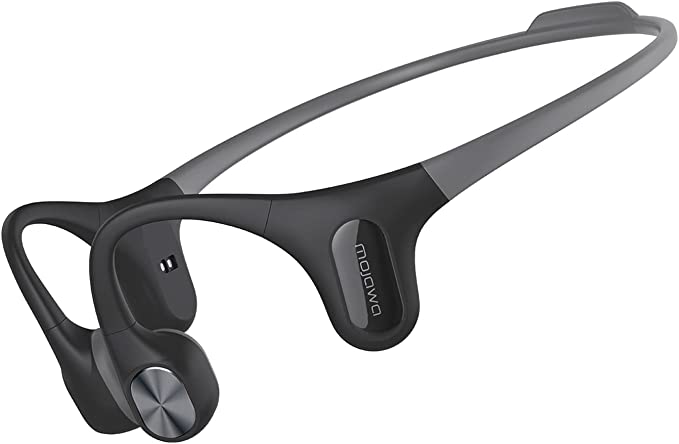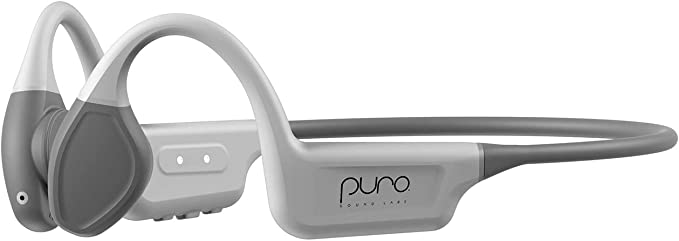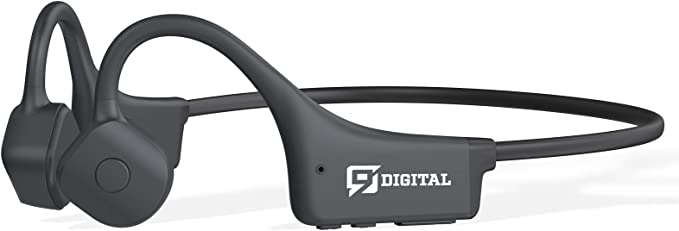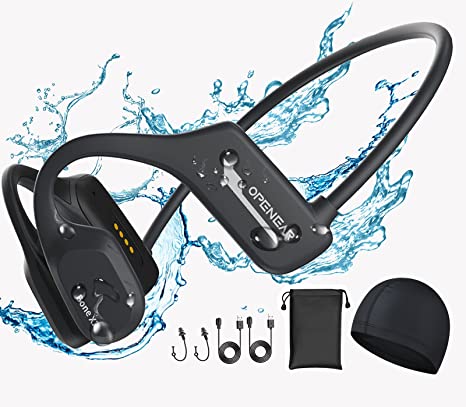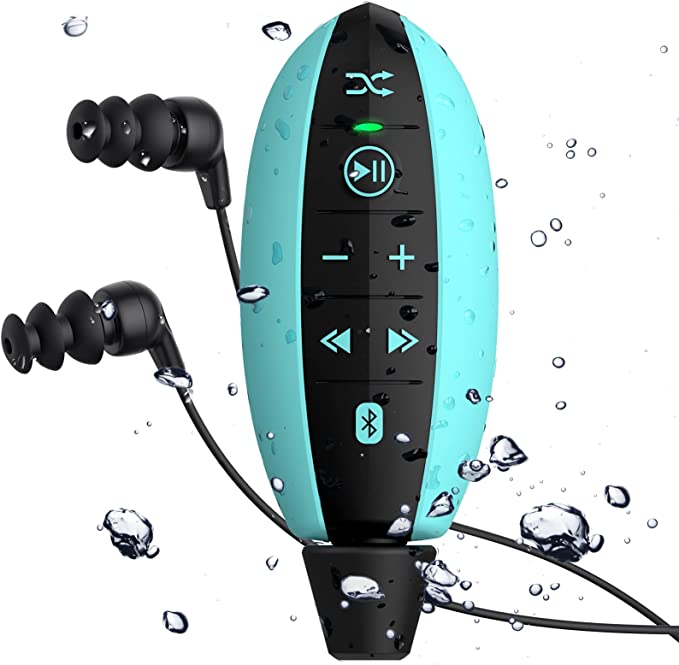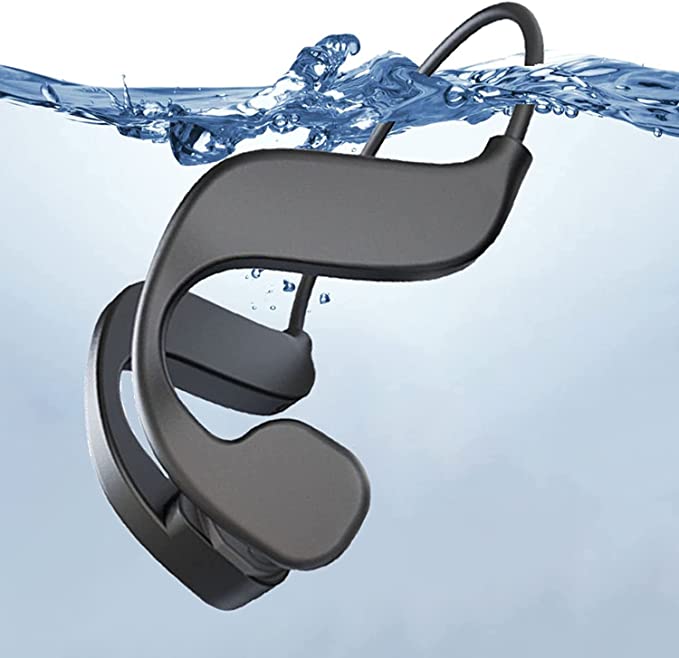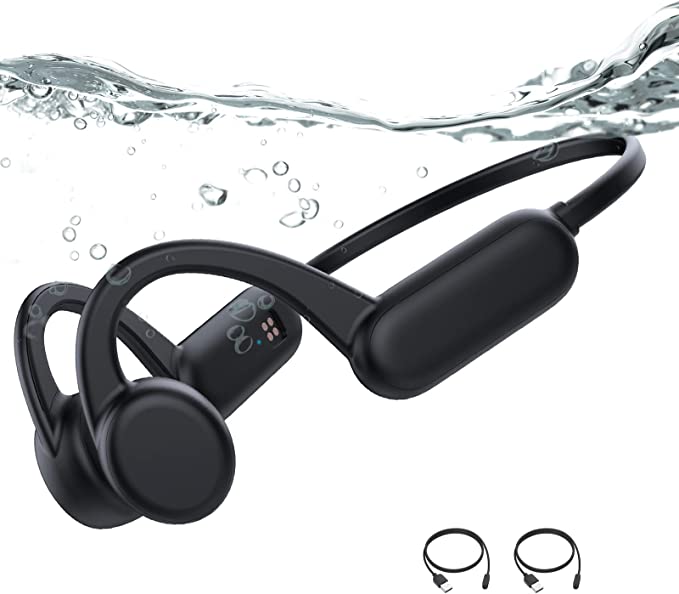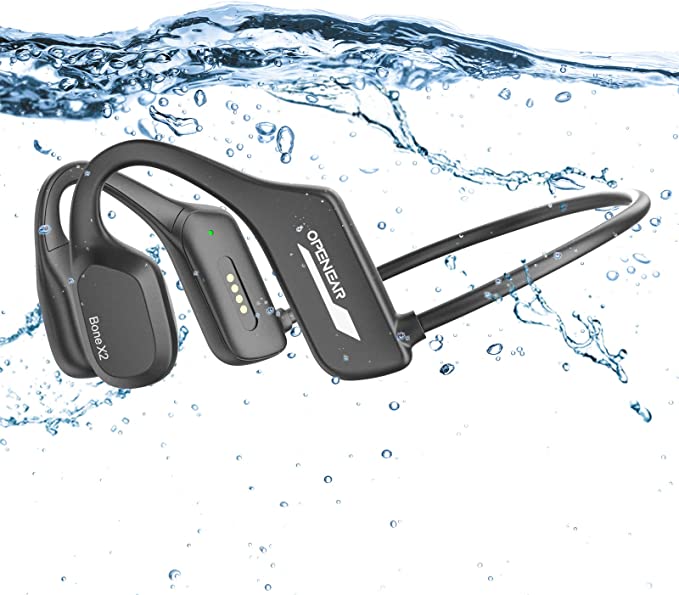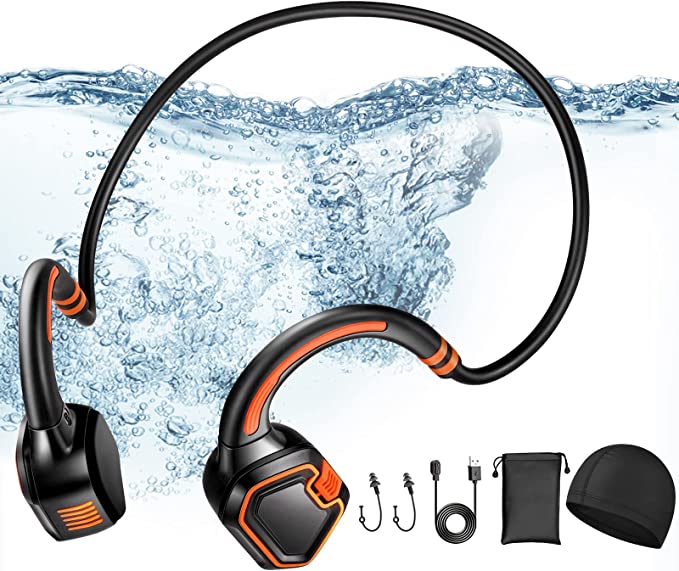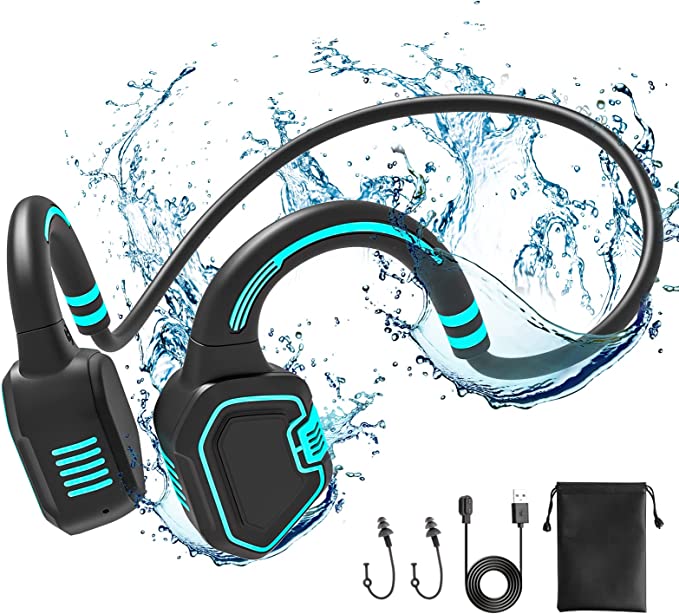FOLEY X8 Bone Conduction Headphones: A Dive into Innovative Listening Experience
Update on June 22, 2025, 8:34 a.m.
Imagine this: you’re gliding through the cool, clear water of a pool, lap after lap. Or perhaps you’re cycling down a scenic route, the wind in your hair. In these moments of focused activity, music can be a powerful motivator, a rhythmic companion. But for years, bringing audio into these environments, especially underwater, has been a tale of frustration – waterlogged earbuds,headphones falling off, or the unnerving silence of being completely cut off from your surroundings. What if there was a way to hear your favorite tunes clearly, without blocking your ears, even while swimming? This isn’t a futuristic dream; it’s the reality offered by devices like the FOLEY X8 Bone Conduction Headphones, and the science behind them is quite fascinating.

A Different Kind of Symphony: Understanding Bone Conduction
The very idea of hearing sound without anything directly in your ear canals might seem counterintuitive. We’re used to sound waves traveling through the air, into our ear canals, and vibrating our eardrums. That’s air conduction. The FOLEY X8, however, employs bone conduction technology, a method that sidesteps the outer and middle ear. Instead of tiny speakers aiming sound into your ears, these headphones have transducers that rest gently on your cheekbones, just in front of your ears. These transducers convert audio signals into subtle vibrations.
Think of it like this: have you ever felt the deep thrum of a bass guitar through the floor at a concert? Your body is sensing those vibrations. Bone conduction works on a similar principle, but with remarkable precision. These vibrations travel through the bones of your skull directly to your cochlea, the snail-shaped organ of hearing in your inner ear. The cochlea doesn’t really care how it gets the vibrations – whether through the eardrum and tiny middle-ear bones (the ossicles) or directly through your skull – as long as it gets them, it can send signals to your brain to be interpreted as sound.
This isn’t brand new science. In fact, a famous (though perhaps apocryphal) story tells of composer Ludwig van Beethoven, who, as his hearing waned, would bite down on a metal rod attached to his piano to “hear” the music through the vibrations conducted by his jawbone. While today’s technology is far more sophisticated, the core principle is the same. The FOLEY X8’s Open Ear form factor is a direct benefit of this. Because nothing obstructs your ear canals, you remain acutely aware of your surroundings. For a cyclist, this means hearing approaching traffic; for a swimmer, it’s hearing a coach’s instructions or other pool users; for a runner, it’s awareness of pedestrians or vehicles. This situational awareness is a significant safety advantage that traditional earbuds often eliminate.
Taking the Plunge: Making Music Truly Waterproof
Now, let’s talk about taking this technology underwater. The FOLEY X8 boasts an IPX8 waterproof rating. In the world of tech specs, “IP” stands for Ingress Protection. The “X” means its resistance to solids (like dust) wasn’t specifically tested for this particular rating (it’s primarily focused on water), and the “8” is where things get interesting for aquatic adventurers. An IP rating of 8 for liquids signifies that the device can withstand continuous immersion in water under conditions specified by the manufacturer. For the FOLEY X8, this translates to being “suitable for swimming, diving, skiing etc. sports,” according to their product information. This isn’t just about surviving an accidental splash; it’s designed for intentional, prolonged water use.
However, even the most waterproof headphones face a formidable opponent underwater: the physics of Bluetooth. Your smartphone uses Bluetooth, a type of radio wave typically operating in the 2.4 GHz frequency band, to stream music to wireless headphones. Unfortunately, water is exceptionally good at absorbing and scattering these radio waves. Think of trying to shout to someone across a crowded, noisy room versus trying to shout to them underwater – the message just doesn’t travel well. This is why many users, like Neta D. in the customer reviews for the X8, find that Bluetooth streaming becomes unreliable or cuts out completely the moment their head goes underwater. FOLEY itself wisely notes: “Tips: Bluetooth is limited in water.”
So, how does the FOLEY X8 deliver on its promise of underwater audio? The answer lies in its built-in 8GB MP3 player. This is a crucial feature, not just a bonus. By allowing you to load approximately 1500 songs directly onto the headphones (as estimated by FOLEY, depending on file size and quality), you create a self-contained audio system. There’s no reliance on a fickle Bluetooth signal battling its way through the water. You’re listening to music stored right there on your head. This is the key to uninterrupted musical accompaniment for your swims, a point echoed by users like Marjorie who, after figuring out how to convert her iTunes library to MP3, was “swimming laps to music of [her] choice.”
Beyond the Deep End: Features for Every Adventure
While the underwater MP3 capability is a standout, the FOLEY X8 is designed to be a versatile companion. For your land-based activities, it features Bluetooth EDR 5.3 technology. Bluetooth 5.3, especially with Enhanced Data Rate (EDR), offers improvements in connection stability, pairing speed, and potentially power efficiency compared to older Bluetooth versions, ensuring a solid link to your smartphone or tablet when you’re not submerged.
Keeping those tunes going is a built-in 300 mAh battery, which FOLEY states provides up to 12 hours of playtime, with a standby time of up to 400 hours. Recharging is handled by a magnetic suction charging cable, a smart choice for waterproof devices as it eliminates an open port that could be a point of water ingress or corrosion. Charging typically takes 1-2 hours.
To ensure the headphones stay in place during vigorous activity, especially swimming, they incorporate an “integrated clip design that easy attach to your swimming goggles.” This addresses a common issue with many sports headphones – keeping them secure. As reviewer Mac pointed out, they are indeed intended to be used with goggles for the best experience in water.
The Listener’s Ledger: What It Sounds Like, How It Feels
The audio experience with bone conduction is unique. Because it bypasses the eardrum, the sound can feel a bit different from what you’re used to with traditional headphones. Many users find it excellent for spoken word content like podcasts and audiobooks, and clear for most music. However, it might not deliver the same deep, thumping bass that in-ear or over-ear headphones can produce, as the transmission method is different. Some users, like “Imalamecanadian,” discovered a common tip: wearing earplugs with bone conduction headphones can sometimes enhance the perceived richness and bass of the music by blocking out ambient sound that would normally enter the ear canal, creating a more isolated internal listening experience.
One characteristic often associated with bone conduction headphones is “sound leakage” – the possibility that people nearby might hear a faint whisper of your audio, especially at higher volumes. This is because the vibrations can also cause the surface of the headphones themselves to vibrate the air. While it might make them less suitable for a silent library, it’s generally not an issue in active outdoor or noisy gym environments.
Looking at user feedback for the FOLEY X8 (which has an average of 3.5 out of 5 stars from 23 ratings at the time of sourcing the info), a picture emerges. Many appreciate the core functionality, particularly the MP3 mode for swimming. The price point is also seen as reasonable by some compared to other brands. However, like any product, it’s not without its critics. One user (“Disappointed”) reported their unit dying after a few months, though FOLEY offers a “90 Days Money Back and One Year Free Replacement” warranty, which provides some recourse. The key takeaway for underwater use, reiterated by both the manufacturer and user experiences, is to embrace the MP3 mode.
The Future is Fluid: Where Audio Tech Might Take Us
The FOLEY X8 Bone Conduction Headphones are a compelling example of how technology can be cleverly adapted to solve very specific challenges, like enjoying music while swimming. They showcase a blend of established principles (bone conduction, MP3 playback) with modern engineering (IPX8 waterproofing, Bluetooth 5.3, magnetic charging) to create a product that opens up new possibilities for athletes and active individuals.
Understanding the “how” and “why” behind these features – why bone conduction allows you to hear the world, why IPX8 means true waterproofing, and why MP3 is king underwater – doesn’t just make you a more informed consumer. It allows you to appreciate the ingenuity involved and to better utilize the technology to enhance your experiences. As audio technology continues to evolve, we’ll undoubtedly see even more innovative ways to integrate sound seamlessly and safely into every facet of our lives, whether we’re on land, in the air, or, like with the FOLEY X8, gliding through the water.
